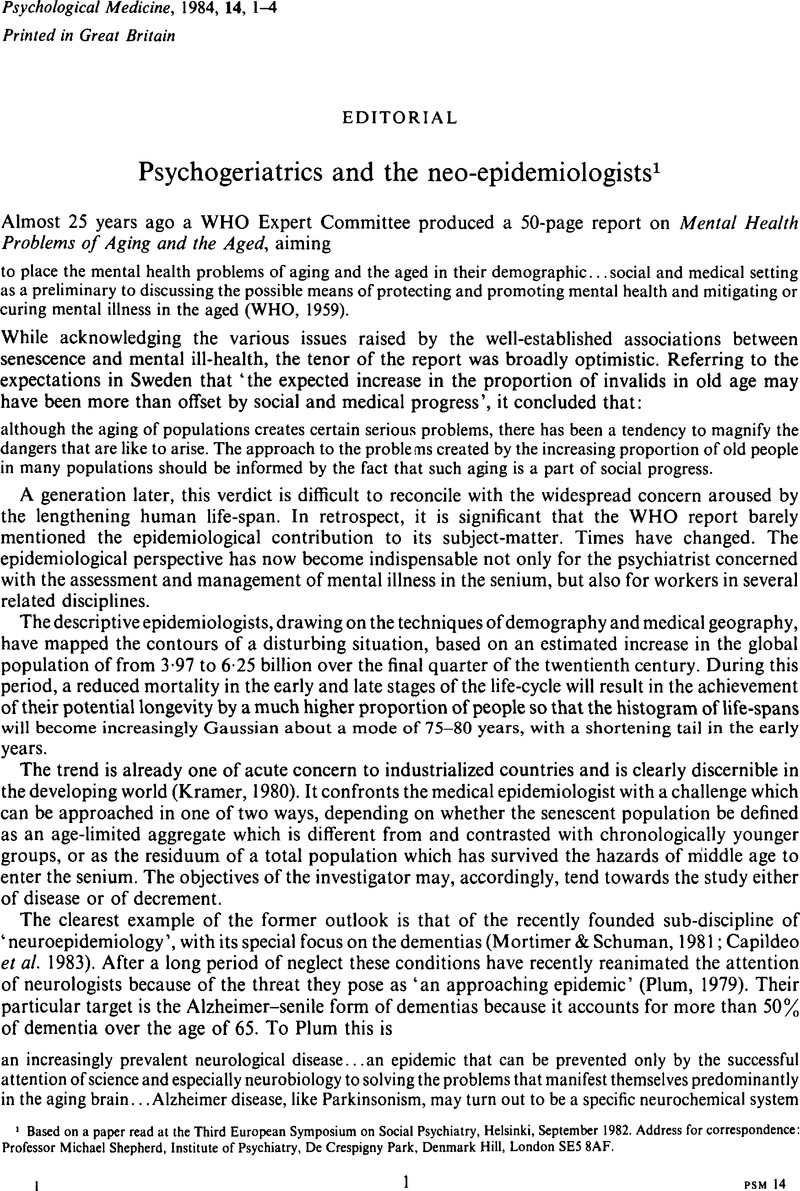Crossref Citations
This article has been cited by the following publications. This list is generated based on data provided by Crossref.
Spagnoli, A.
Avanzini, F.
Foresti, G.
Pirone, F.
and
Tognoni, G.
1986.
Homes for the elderly in Liguria.
Social Science & Medicine,
Vol. 23,
Issue. 6,
p.
629.
Mainprize, E.
and
Rodin, G.
1987.
Geriatrie Referrals to a Psychiatric Consultation-Liaison Service.
The Canadian Journal of Psychiatry,
Vol. 32,
Issue. 1,
p.
5.
Mezzich, Juan E.
Fabrega, Horacio
Coffman, Gerald A.
and
Glavin, Ye-Fan W.
1987.
Comprehensively diagnosing geriatric patients.
Comprehensive Psychiatry,
Vol. 28,
Issue. 1,
p.
68.
Eagles, J M
Beattie, J A
Restall, D B
Rawlinson, F
Hagen, S
and
Ashcroft, G W
1990.
Relation between cognitive impairment and early death in the elderly..
BMJ,
Vol. 300,
Issue. 6719,
p.
239.
Gournas, George
Madianos, Michael G.
and
Stefanis, Costas N.
1992.
Psychological functioning and psychiatric morbidity in an elderly urban population in Greece.
European Archives of Psychiatry and Clinical Neuroscience,
Vol. 242,
Issue. 2-3,
p.
127.
Costello, E. Jane
and
Angold, Adrian
1993.
Toward a developmental epidemiology of the disruptive behavior disorders.
Development and Psychopathology,
Vol. 5,
Issue. 1-2,
p.
91.
Perkins, Mick
1994.
Repetitiveness in language disorders: a new analytical procedure.
Clinical Linguistics & Phonetics,
Vol. 8,
Issue. 4,
p.
321.
Arya, Dinesh K.
1996.
Hypotension: A disease entity with a unique psychologic symptom profile?.
Nordic Journal of Psychiatry,
Vol. 50,
Issue. 1,
p.
43.



